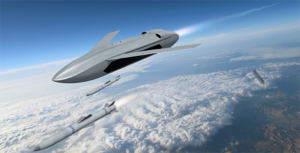
The Pentagon is launching a new unmanned air vehicle (UAV) to engage opponents in air-to-air combat with the LongShot program. On Feb. 8, the Defense Advanced Research Projects Agency (DARPA) announced it awarded contracts to General Atomics, Lockheed Martin [LMT], and Northrop Grumman [NOC] for preliminary Phase I design work for LongShot. LongShot aims to develop an air-launched UAV that can use multiple air-to-air weapons. The overall objective “is to develop a novel UAV that can significantly extend engagement ranges,…

 By
By 











